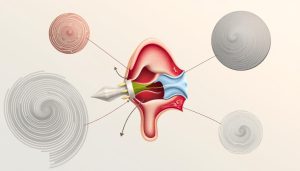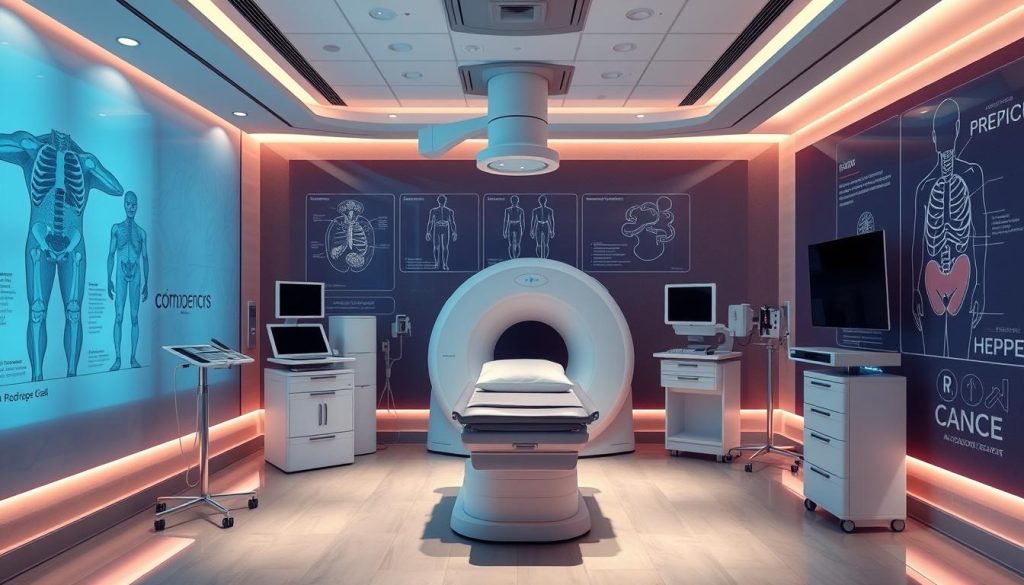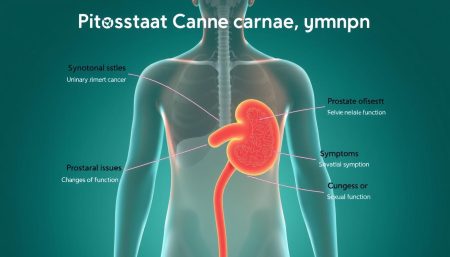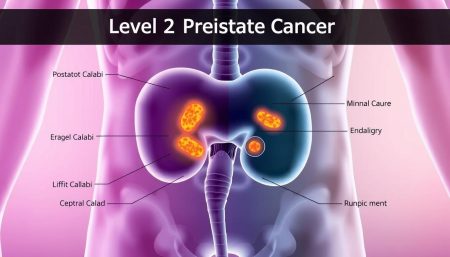Dealing with prostate cancer radiation therapy can be tough. This guide aims to make it clearer, covering treatment options and schedules. We’ll look at what shapes your treatment plan and what you can expect.
We’ll explore different ways to fight prostate cancer, like external beam radiation and brachytherapy. You’ll learn about treatment length, side effects, and recovery time. Our aim is to give you the knowledge you need on this tough journey.
Knowing your treatment schedule is key for mental prep and planning. We’ll dive into the usual number of sessions, how things might change, and how different methods affect treatment time. Let’s start this journey of learning together.
Understanding Prostate Cancer Radiation Therapy Basics
Radiation therapy is key in fighting prostate cancer. It uses high-energy rays to kill cancer cells and reduce tumors. Let’s dive into the basics of this treatment and its different forms.
What Is Radiation Therapy for Prostate Cancer
Radiation therapy for prostate cancer sends precise doses of radiation to the prostate gland. This method targets cancer cells while protecting healthy tissue. It’s used alone or with other treatments.
Different Types of Radiation Treatment Options
Prostate cancer patients have several radiation therapy options:
- External beam radiation: Delivers radiation from outside the body
- Intensity-modulated radiation therapy: A advanced form of external beam radiation
- Brachytherapy: Involves placing radioactive sources directly into the prostate
Each type has its own benefits and considerations. Your doctor will choose the best option for you.
How Radiation Therapy Targets Cancer Cells
Radiation therapy damages cancer cells’ DNA. This stops them from growing and dividing, leading to their death. The treatment is planned to hit the tumor hard while saving healthy tissues. Advanced methods like intensity-modulated radiation therapy make targeting even more precise, improving results.
“Radiation therapy has revolutionized prostate cancer treatment, offering effective tumor control with fewer side effects than ever before.”
How Many Radiation Treatments for Prostate Cancer
The number of radiation treatments for prostate cancer depends on several factors. Patients often wonder about the treatment duration when they’re diagnosed. Let’s look at the standard approaches and what affects treatment length.
Standard Treatment Duration and Frequency
Radiation therapy for prostate cancer usually involves daily treatments for 5 to 9 weeks. This schedule helps target cancer cells effectively while protecting healthy tissues. The exact number of sessions depends on the radiation technique and the patient’s case.
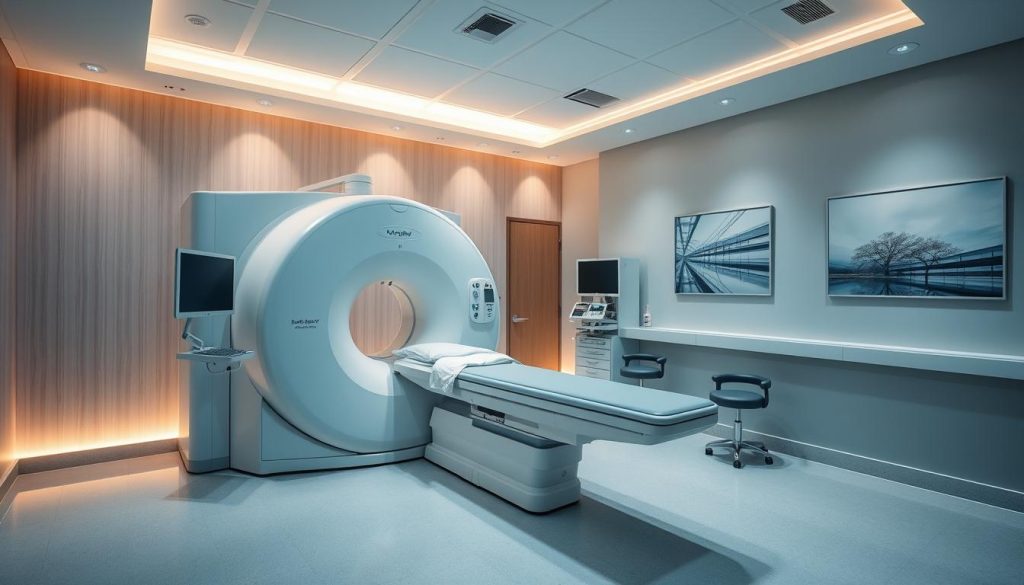
Factors Affecting Treatment Length
Several elements impact the number of radiation treatments needed for prostate cancer:
- Cancer stage and aggressiveness
- Patient’s overall health
- Type of radiation therapy chosen
- Treatment goals (curative or palliative)
Prostate cancer stages are key in determining treatment duration. Early-stage cancers might need fewer sessions than advanced cases.
Conventional vs. Hypofractionated Treatment Schedules
Hypofractionated radiation therapy is a recent advancement. It delivers larger doses in fewer sessions, shortening treatment to 4-6 weeks. This approach offers convenience without losing effectiveness.
| Schedule Type | Duration | Sessions |
|---|---|---|
| Conventional | 7-9 weeks | 35-45 |
| Hypofractionated | 4-6 weeks | 20-30 |
Your oncologist will suggest the best treatment plan for you. The goal is to treat cancer effectively while considering your quality of life during therapy.
External Beam Radiation Therapy (EBRT) Process
External beam radiation therapy is a common treatment for prostate cancer. It uses high-energy rays to target and destroy cancer cells. The treatment schedule usually lasts several weeks, with each session lasting about 15 to 30 minutes.
Before starting EBRT, patients have a planning session called simulation. During this visit, the radiation team creates a custom treatment plan. They use imaging scans to map the prostate and surrounding tissues. This careful planning helps focus the radiation on the tumor while sparing healthy cells.
Once treatment begins, patients follow a set radiation treatment schedule. Most men receive treatments five days a week for seven to nine weeks. Some newer approaches use higher doses over a shorter time frame, known as hypofractionation.
“EBRT allowed me to maintain my daily routine. The sessions were quick, and I could go about my day as usual.”
During each session, patients lie still on a treatment table. The radiation machine moves around them, delivering beams from various angles. This precision targeting helps reduce side effects and improve outcomes.
| EBRT Element | Description | Duration |
|---|---|---|
| Planning Session | Imaging and mapping of treatment area | 1-2 hours |
| Daily Treatment | Radiation delivery | 15-30 minutes |
| Full Course | Complete radiation treatment schedule | 7-9 weeks |
Throughout the EBRT process, patients work closely with their healthcare team. Regular check-ups help monitor progress and manage any side effects that may arise during treatment.
Intensity-Modulated Radiation Therapy (IMRT) Treatment Plan
Intensity-modulated radiation therapy is a modern way to fight prostate cancer. It shapes radiation beams to fit the tumor’s shape. This helps protect healthy tissues from damage.
IMRT Technology and Precision
IMRT uses computers and special machines to send precise doses of radiation. It changes the beam’s intensity during treatment. This makes the therapy more focused, reducing side effects and improving results.
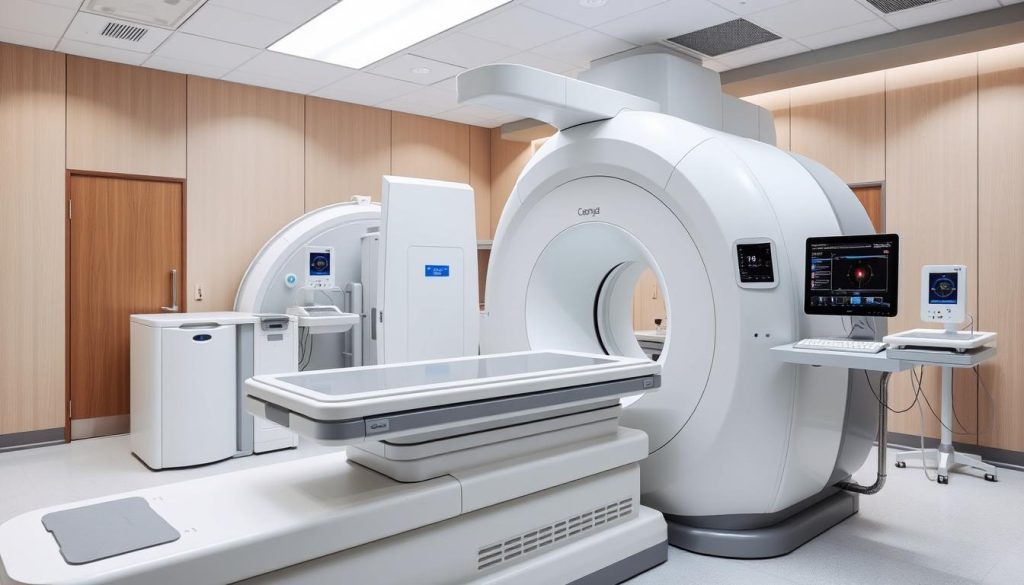
Treatment Planning and Preparation
Before starting IMRT, patients get detailed scans. Doctors use these scans to make a 3D model of the prostate and nearby areas. This model helps create a treatment plan just for them.
Daily Treatment Sessions
IMRT treatments happen every day for several weeks. Each session takes 15 to 30 minutes. Patients stay still while the machine moves around them, sending radiation from different angles.
- Sessions are usually scheduled 5 days a week
- Treatment course can last 6 to 8 weeks
- No overnight hospital stays required
Doctors keep an eye on how the treatment is going and make changes if needed. This flexible approach helps keep the treatment plan working best for each patient.
Brachytherapy as an Alternative Treatment Option
Brachytherapy is a targeted way to fight prostate cancer. It places radioactive sources close to the tumor. This method gives precise doses of radiation.
Low-Dose-Rate (LDR) Brachytherapy
LDR brachytherapy involves tiny radioactive seeds in the prostate gland. These seeds slowly kill cancer cells over months. The whole process is done in one visit, with little downtime.
High-Dose-Rate (HDR) Brachytherapy
HDR brachytherapy uses temporary radioactive sources. It gives high doses of radiation in short sessions. Treatments are spread over a few days, each lasting 10-20 minutes.
Duration and Recovery Time
The time needed for brachytherapy varies. LDR seeds stay active for months, while HDR sessions last a few days. Most patients can go back to normal activities in a week. Some might face temporary urinary issues or discomfort.
Using brachytherapy for prostate cancer offers focused treatment. It allows for more radiation to the tumor while protecting healthy tissues. This can mean fewer side effects and shorter treatment times than traditional methods.
Managing Side Effects During Radiation Treatment
Radiation therapy for prostate cancer can lead to side effects. Common issues include urinary problems, bowel changes, and fatigue. Doctors work closely with patients to manage these symptoms effectively.
Supportive care is key in easing discomfort. This may include medications, dietary adjustments, and lifestyle changes. Pelvic floor exercises can help with urinary control. Staying hydrated and maintaining a balanced diet can alleviate bowel issues. Rest and gentle exercise often help combat fatigue.
Some men undergo hormone therapy for prostate cancer alongside radiation. This combination can enhance treatment effectiveness but may introduce additional side effects. These might include hot flashes, decreased libido, and mood changes. Open communication with your healthcare team is crucial for addressing these concerns promptly.
Remember, each person’s experience with radiation therapy is unique. Your doctor can provide personalized strategies to minimize side effects and improve your quality of life during treatment. Regular follow-ups allow for timely adjustments to your care plan, ensuring the best possible outcome.
FAQ
Q: How many radiation treatments are typically needed for prostate cancer?
A: The number of treatments for prostate cancer varies. It depends on the therapy type and individual factors. For example, conventional external beam radiation therapy might need 5 treatments a week for 8 weeks. This totals about 40 treatments.
Hypofractionated radiation therapy might need fewer sessions. It could be 20-28 treatments over 4-6 weeks. Brachytherapy can be done in 1-2 sessions for low-dose-rate (LDR) or 2-4 sessions for high-dose-rate (HDR) treatments.
Q: What are the different types of radiation therapy available for prostate cancer?
A: There are several types of radiation therapy for prostate cancer.
1. External Beam Radiation Therapy (EBRT): This delivers radiation from outside the body.
2. Intensity-Modulated Radiation Therapy (IMRT): An advanced form of EBRT that precisely targets the tumor.
3. Brachytherapy: This involves placing radioactive sources directly into or near the prostate.
Your oncologist will discuss the best approach for your case.
Q: How does radiation therapy target cancer cells in the prostate?
A: Radiation therapy targets cancer cells by delivering high-energy rays or particles. These rays damage the DNA of these cells, stopping them from dividing and growing. Modern techniques like IMRT use advanced imaging and computer-guided systems to focus the radiation on the tumor.
This targeted approach helps maximize treatment effectiveness while reducing side effects.
Q: What factors affect the length of radiation treatment for prostate cancer?
A: Several factors can influence treatment duration.
1. Cancer stage and grade: More advanced cancers may require longer treatment courses.
2. Overall health of the patient: General health condition can impact treatment tolerance.
3. Type of radiation therapy: EBRT typically requires more sessions than brachytherapy.
4. Treatment goals: Whether the aim is curative or palliative can affect treatment length.
5. Use of hormone therapy: Combining radiation with hormone therapy may alter the treatment schedule.
Your oncology team will consider these factors to create a personalized treatment plan.
Q: What is the difference between conventional and hypofractionated radiation schedules?
A: Conventional radiation schedules deliver smaller doses of radiation over a longer period. This is usually 5 days a week for 8 weeks. Hypofractionated schedules deliver larger doses of radiation over a shorter period. This is usually 4-6 weeks.
Hypofractionation can be as effective as conventional fractionation for many prostate cancer patients. It offers the advantage of a shorter overall treatment time. However, the choice between these schedules depends on individual factors and should be discussed with your radiation oncologist.
Q: What side effects can I expect during radiation therapy for prostate cancer?
A: Common side effects of radiation therapy for prostate cancer may include:
1. Urinary issues: Frequent urination, urgency, or discomfort
2. Bowel problems: Diarrhea, rectal irritation, or bleeding
3. Fatigue: Feeling unusually tired
4. Skin reactions: Redness or irritation in the treated area
5. Sexual dysfunction: Erectile difficulties or decreased libido
It’s important to note that side effects can vary in severity and duration. Your healthcare team will provide guidance on managing these effects and may adjust your treatment if necessary.
Q: Is hormone therapy used alongside radiation for prostate cancer?
A: Yes, hormone therapy is often used in combination with radiation therapy for prostate cancer. This is especially true for intermediate or high-risk disease. Hormone therapy can shrink the prostate and make the cancer more sensitive to radiation. This can potentially improve treatment outcomes.
The duration of hormone therapy can range from a few months to several years. Your oncologist will determine if hormone therapy is appropriate for your treatment plan. They will discuss its potential benefits and side effects with you.











